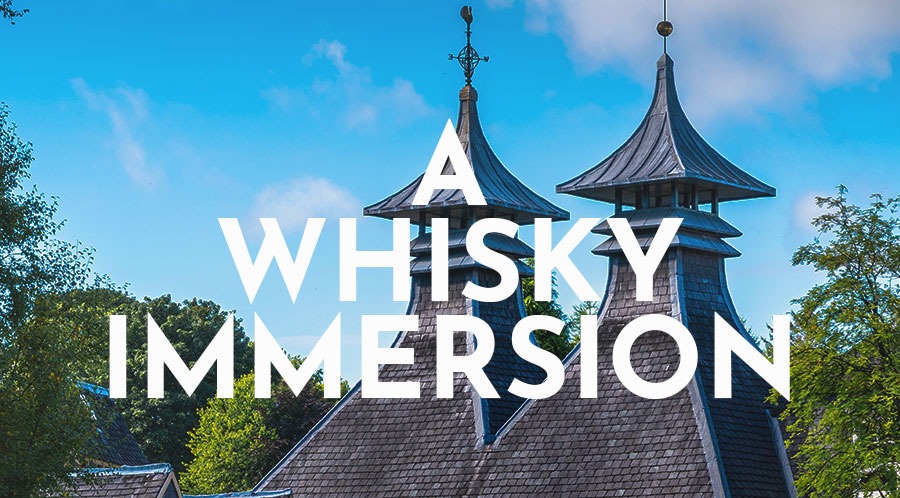
A Speyside Distillery Tour
As you travel through Moray Speyside you will come across so many great things to do and so many beautiful things to see. The Moray Speyside region is famed for its wonderful history, incredible landscapes and award-winning coastline.
However there is one thing that Moray has that stands above all other things. This is Moray, the heart of Single Malt Whisky – not just in Scotland but worldwide.
The area’s rich supply of pure water and beautiful inland setting help to produce smooth and complex whiskies that provide an elegant contrast to the heavily peated whiskies that are produced by distilleries in other regions.
Moray Speyside whiskies can often be identified by their sweet and fruity notes. However, hints of nuts and malt are also common, with some whiskies possessing a refined smokiness.
With a written history dating back to 1494 and Friar John Cor at Lindores Abbey in Fife, whisky has grown with Scotland itself to become one of the most desirable drinks in the world.
More than 50% of all the distilleries in Scotland are found here, so where should you start?
Eastern Speyside
Home to perhaps some lesser known lights of the industry such as Strathmill, Aultmore and Glentauchers but also the oldest distillery in the region at Strathisla founded in 1786.
Distillation was being practised in the area long before the Excise Act of 1823. The remoteness of the area made it a popular choice for illicit distillers could hide away from the prying eyes of the law and take time to produce their whiskies.
The oldest working distillery in the region is Strathisla Distillery, located in the town of Keith. Built in 1786, it generally considered to be one of the prettiest distilleries in the region. A team of just five produce the single malt that is at the heart of the Chivas Regal and Royal Salute Blended Scotches, a malt with rich red apple and nutty overtones. Enjoy a cocktail in the bar and take the first step in appreciating the versatility of Scotch Whisky.
Only a few hundred metres away from Strathisla is the ruin of the Milton Tower and there are records of beer being produced there long before the foundation of the distillery.
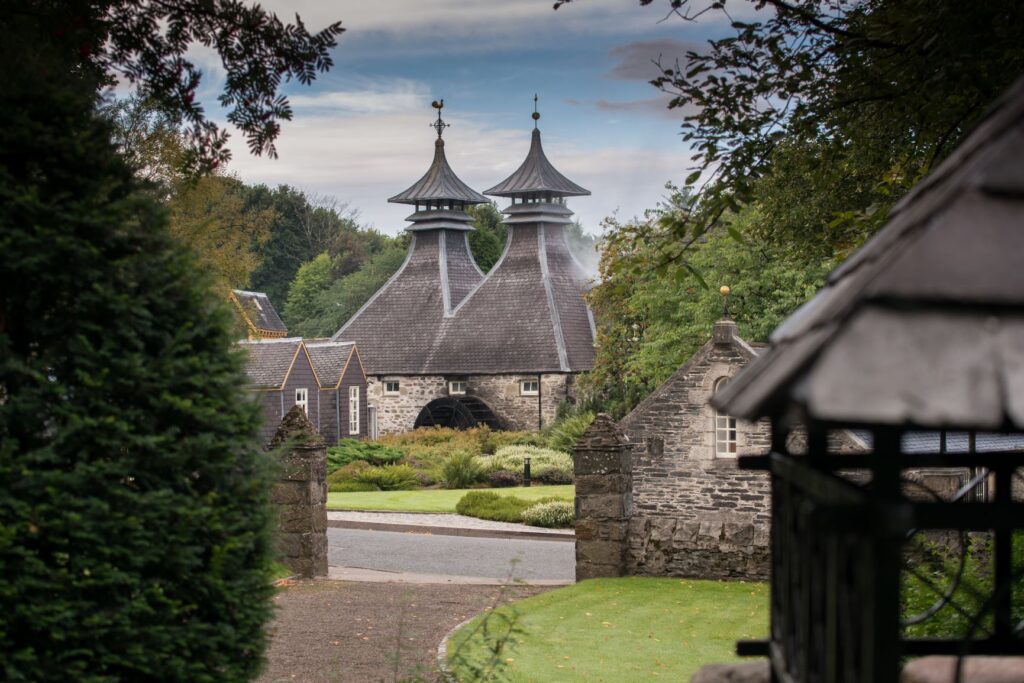
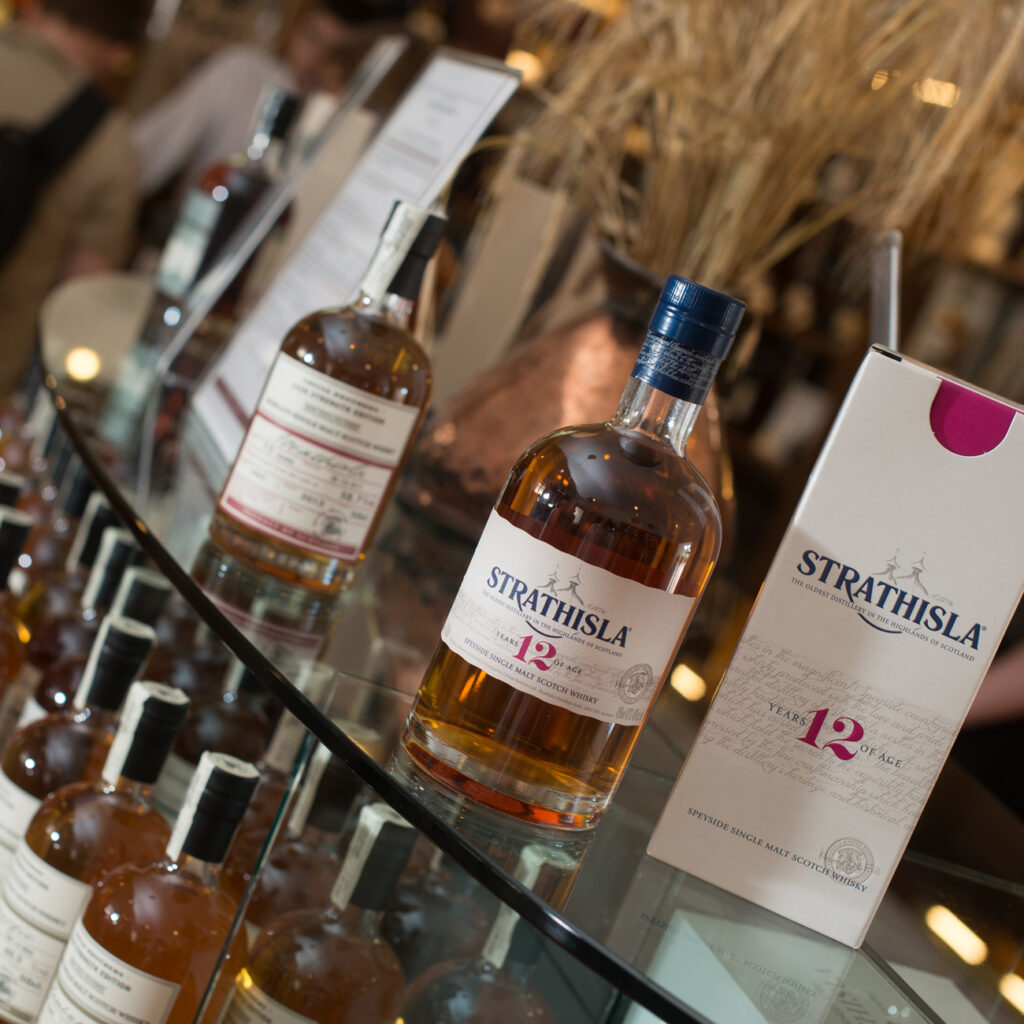
The Whisky Capital of the World
A few miles inland is Dufftown, the self–proclaimed ‘Malt Whisky Capital of the World’ – home to eight distillery sites within the small village.
The locals are extremely proud of their town and its whisky heritage and leading the way is Glenfiddich, the home of the world’s most popular Single Malt Scotch which began distilling on Christmas Day 1887 under the guidance of William Grant working alongside his nine children.
The Glenfiddich visitor experience offers a complete immersion in whisky making, taking you step-by-step through the production process, to bottling on site and then on to the first ever Distillery Visitor Centre in Scotland, opened in 1963. Oh, and drop by the coffee shop…we promise it is worth it.
Just next door you will find The Balvenie Distillery. Balvenie is a whisky of huge complexity, worth the visit alone just to see the Floor Malting working (but please book well in advance). Take a walk around the village and look out for the other sites such as Glendullan, Parkmore, Dufftown, Mortlach, Kininvie and the short lived Pittyvaich.
Head from Glenfiddich into Dufftown and when you reach the Clock Tower (allegedly the site of an illegal still) turn right and head through Glen Rinnes into the hills
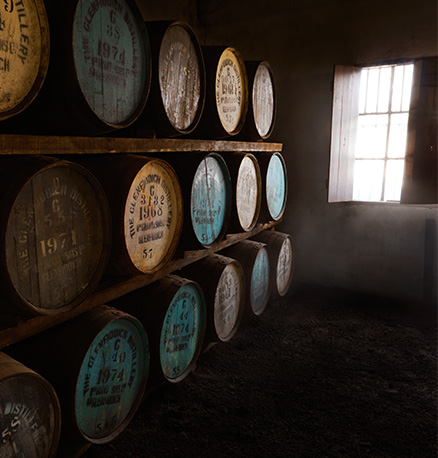
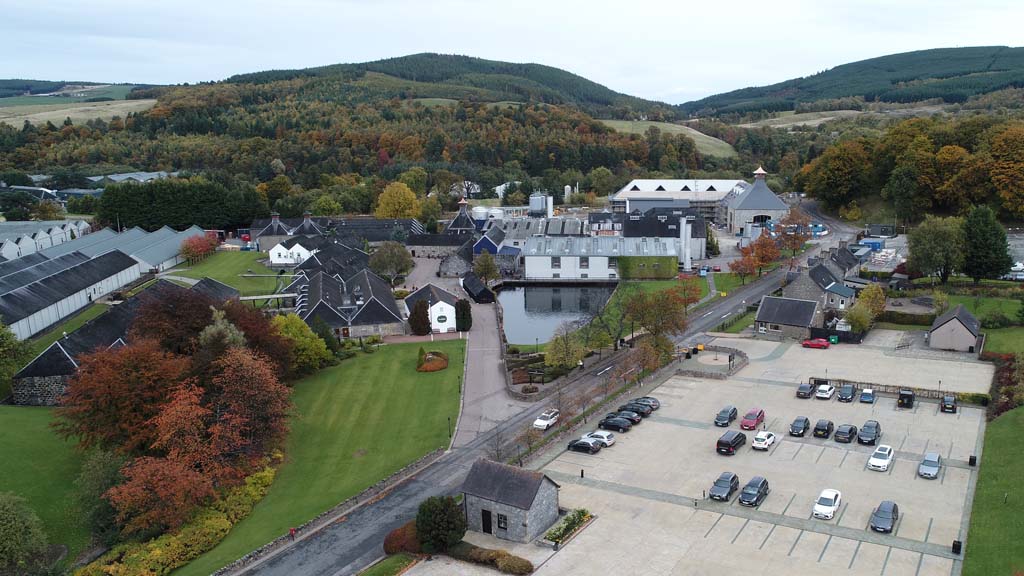
Head for the Hills
In the summer the glen is alive with life but during winter it can be very remote and isolated. You will pass Allt A’Bhainne distillery on the drive, a relative youngster in whisky making terms at just over 45 years old.
Carry on past the Glenrinnes Gin Distillery at the foot of Ben Rinnes and you will arrive at Auchbreck.
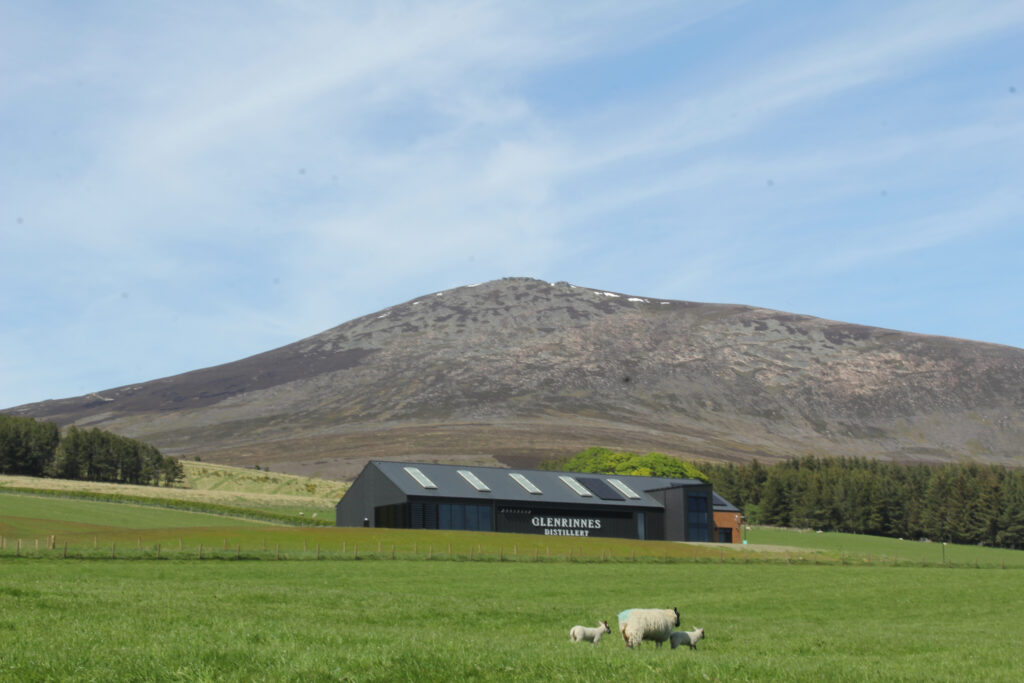
Turn left at this junction and you drive further into the hills passed Tamnavulin Distillery, Gaelic translation of ‘mill on the hill’, and on towards the secretive Braeval located at the foot of the Ladder Hills and literally where the road stops.
Beyond Braeval lies the Scalan, a Roman Atholic Seminary that has been there for more than 400 years and still occupied today. If you head onwards on that road, you will be on the A939, famous as the first road in the Highlands to be blocked with snow every winter.
Head back the past Auchbreck and then look across the valley and you will see The Glenlivet, alongside Glenfiddich and Macallan it is one of the three powerhouses of Single Malt Scotch.
One of the distilleries that defined the region, The Glenlivet not only has a wide selection of offerings but a history that is second to none. Ask your guide about the pistols that belonged to the founder George Smith. If the weather is good take the 20-minute walk up to the original site but remember to set aside plenty of time for your visit of the distillery.

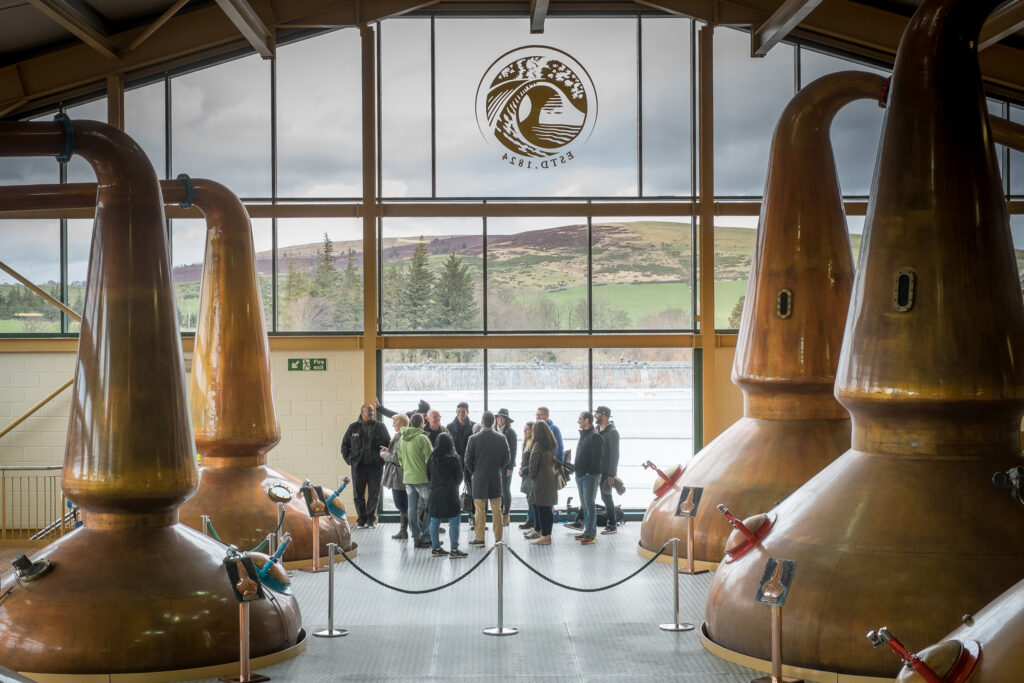
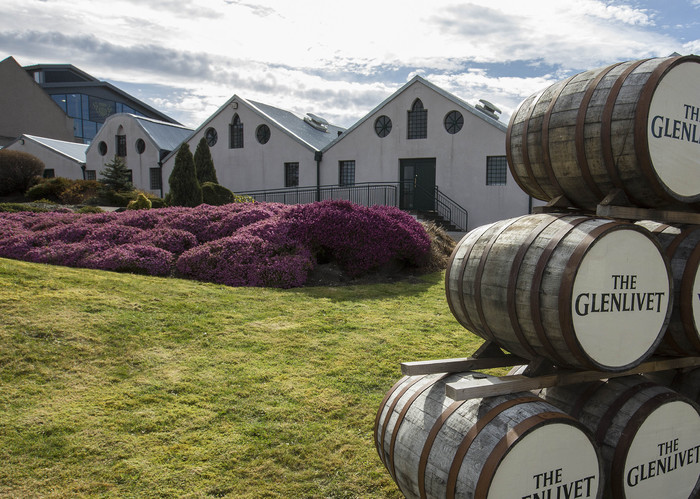
Leave The Glenlivet following the course of the River Livet which then merges into the River Avon (pronounced A’an) and head onto towards its confluence with the mighty Spey.
Another junction in the road, another decision…Turn left and head towards four very different and distinct distilleries.
Southern Speyside
At Cromdale you will find Balmenach, another with a curious history and formerly owned by the Bruce-Lockhart family of whom Sir Robert was allegedly a British Spy, it is also the home to Caorunn Gin. At present this is the most southerly of our distilleries on Speyside so you will have to turn around and follow the A95 north again.
Next stop is the magnificent Tormore Distillery, the first complete distillery built in the 20th century and designed by Sir Albert Richardson, one of the most visually appealing in the region. The site also has its own village hall and was planned as its own community due to being so remote. The reaches of the Spey near the distillery are one of the few remaining places where if you are lucky freshwater pearls can still be found.
On now to Cragganmore, as close as you can get to the taste of Speyside in a bottle. Founded by John Smith, he had the foresight to have a siding of the local railway enter the distillery. An advantage in later life, as a gentleman of a larger build he was unable to fit into the seats of the passenger carriages and had to travel to Elgin in the goods wagons.
Central Speyside
Almost next door is Ballindalloch Distillery, the first true single estate malt whisky in Scotland using barley only grown on the estate farms. A very small distillery but that also makes it very easy to understand the process as you walk through the site, the distillery was the brainchild of the MacPherson-Grant family who own Ballindalloch Castle (which is worth a visit for that short period when you are not visiting distilleries).
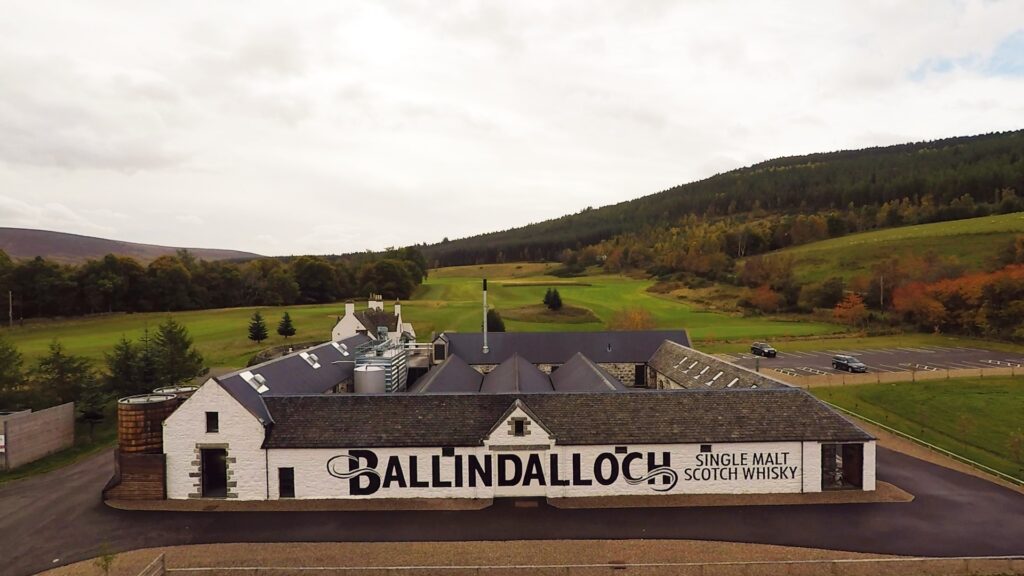
As we follow the River Spey, visitors now have several options depending on the time available. It is possible to walk the Speyside Way to Aberlour, passing distilleries such as Tamdhu, Knockando, Cardhu (home of Johnnie Walker, the world’s no. 1 Scotch Whisky), Dalmunach and Daliuiane that would not normally be seen from the road.
Western Speyside
The village of Aberlour (or to give it its full name Charlestown of Aberlour) is a planned village being laid out in 1812 in a grid system, very unusual for that period.
Aberlour Distillery is hidden away behind those famous red gates at the southern end of the village and is renowned for the quality of the tours (as with the Balvenie it is best to book in advance as much as possible). A few hundred metres away is the original Walker’s shop. They are now a global force with their shortbread available in almost as many countries as Scotch Whisky.
Looking across the river from Aberlour you will see the skyline of the new Macallan Distillery, founded in 1824 in the early days of legal distillation. The new distillery opened in 2018 and was built at a cost of around £140m.
Renowned for the small size of the copper pot stills the spirit has a richness that some of its neighbours may not have. The Macallan have raised the bar for the whisky visitor experience, instantly becoming a must-do on any visit to Speyside.
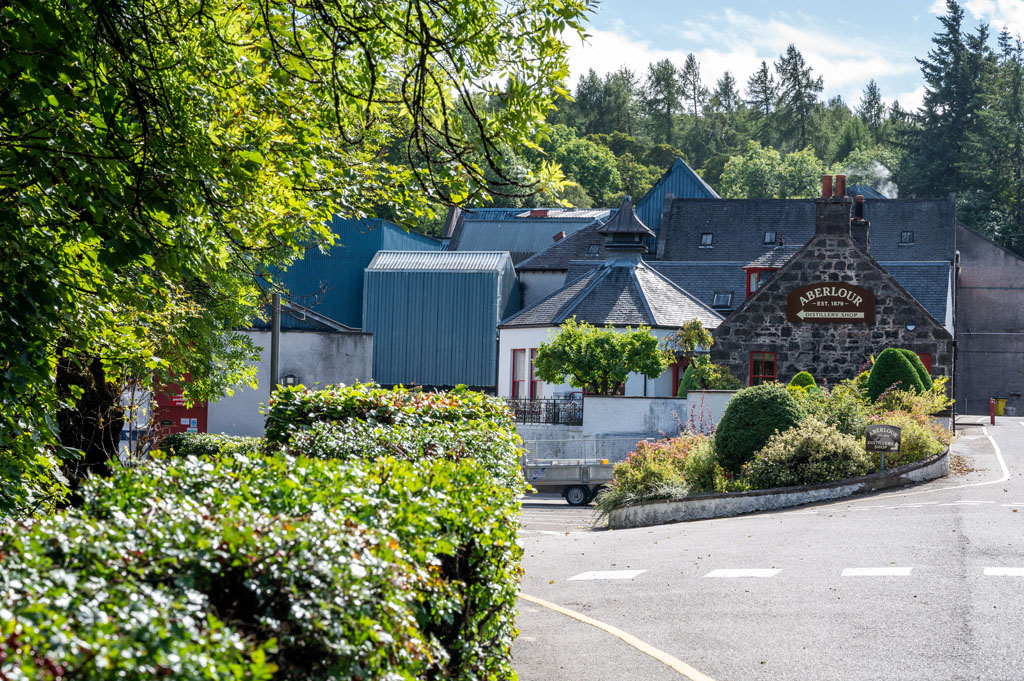

As one of the ‘big three’ you will leave Macallan struck not only by the modernity of the building, but the quality of the entire brand experience. No wonder it’s the brand that James Bond reaches for so often these days!
Rothes is our next stop before we follow the Spey on it’s journey north towards Garmouth and Spey Bay where famously King Charles II arrived back from exile to the UK in 1650.
Home now to four distilleries (formerly five before the demise of Caperdonich in 2011) Rothes has many stories to tell the whisky lover whether it be Speyburn, Glen Spey or their more famous neighbours of Glenrothes and Glen Grant.
With last two distilleries located either side of the local cemetery there are several stories of “unexplained visitors”, including one that tells of Biawa Makalaga, an orphaned child brought back to Scotland by Major James Grant, owner of the Glen Grant.
We encourage you to also visit the gardens at Glen Grant which is home to some unique trees and flowers brought back to Scotland by Major Grant. Remember to also ask about the whisky pipe that passed over the main road from Caperdonich Distillery to Glen Grant Distillery.
The Laich of Moray
Just south of Elgin we come to the Laich of Moray, a band of fertile ground (if you visit between July and September time the fields will be awash with ripening barley crops) where you will find another group of distilleries including Glenlossie, Mannochmore, Glen Elgin, Longmore and BenRiach. BenRiach is the only one of these distilleries currently open to the public. It opened the doors to its small but perfectly-formed visitor centre and shop in June 2021.
In Elgin itself there is only one distillery; Glen Moray on the western edge of town, perhaps not as widely known as some but a great deal of innovation in the use of casks.
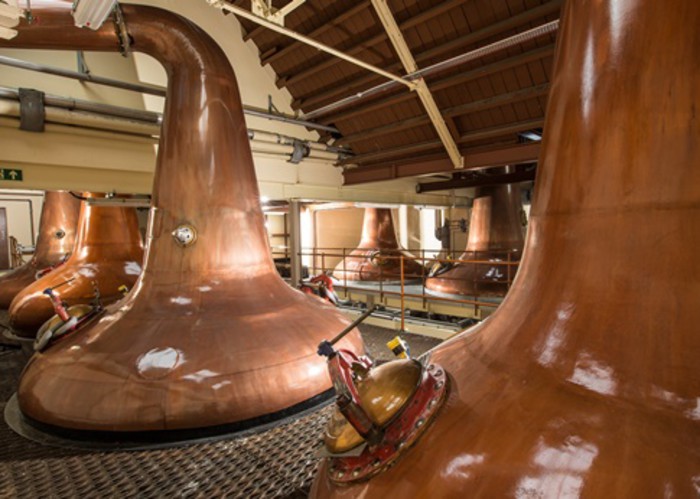
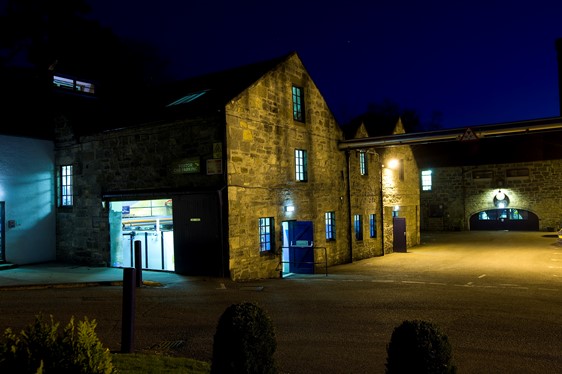
Our trip then takes us west from Elgin towards Miltonduff Distillery, one of the key malts in the globally recognised Ballantine’s Blended Whisky. The distillery uses the water of the Black Burn as do the monks at the nearby Pluscarden Abbey (we highly recommend visiting). A 15 minute drive will then take you along the road to Glenburgie Distillery, a very old site that was distilling legally in 1810 under the name Kilnflats.
There are even rumours of a tunnel from Glenburgie to Kinloss Abbey that the illegitimate distillers would have used to get their whisky to the coast so the ships waiting off shore could export the goods round the country.
The final leg of our journey will take us to Forres and the Benromach Distillery. Brought back to life in 1998 by the Urquhart family, the owners of the famous independent bottler Gordon & MacPhail.
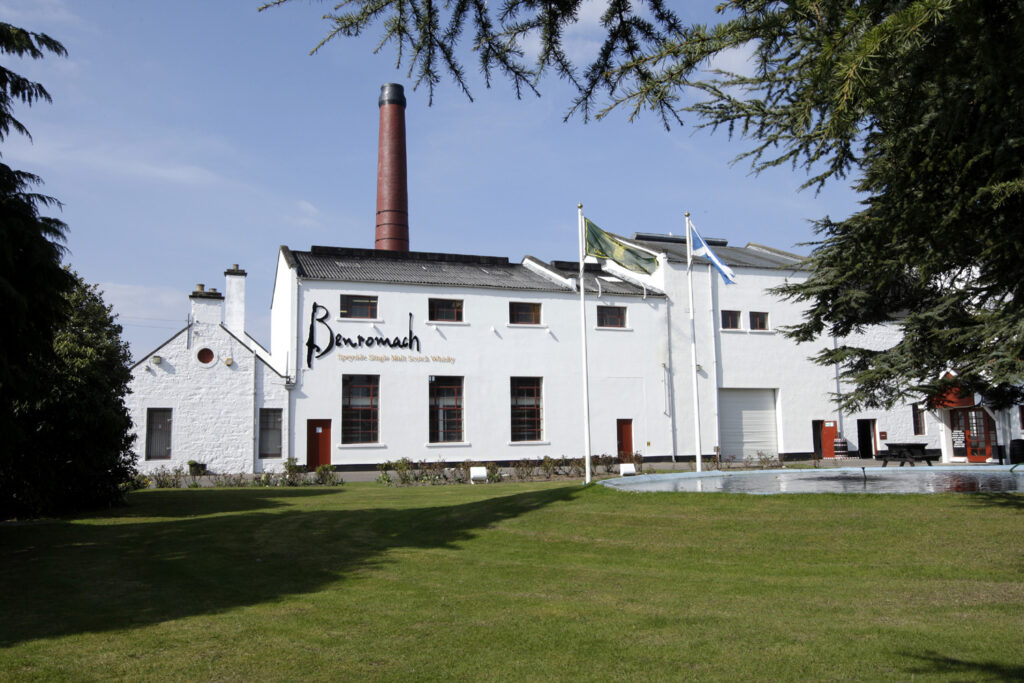
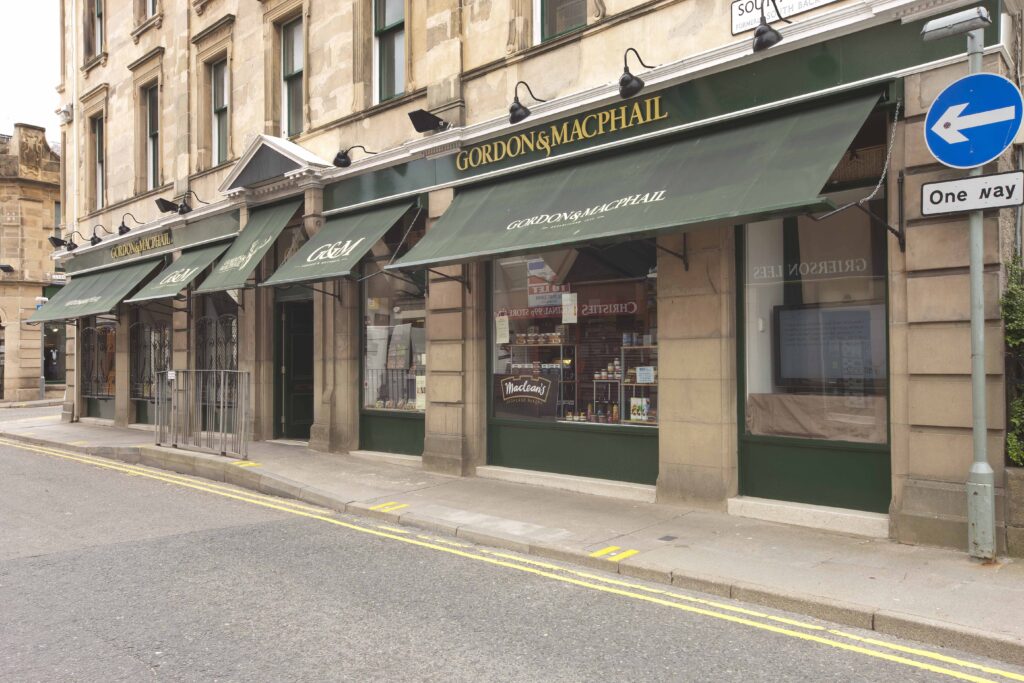
The impressive team of three within Benromach are involved in every aspect of producing the whisky. With many different expressions available including Benromach Organic – it is the perfect spot to stop and catch our breath after travelling around Moray Speyside and reflect on a special tour around a wonderful region.
The Dava Way walking route, which starts within Forres, plays host to two very different extremes of Moray Speyside’s whisky heritage. Firstly, built around 1900 to help quench the growing thirst for whisky, Dallas Dhu distillery sits just a mile outside of Forres. Further along the Dava Way you’ll find Moray’s newest distillery, Dunphail Distillery. Despite being Moray’s new kid on the block, Dunphail crafts the finest whisky in a traditional fashion.
Things to Remember on Your Trip
- Distilleries generally offer a Driver’s Pack to the designated driver meaning you can take away drams from the tour to enjoy later.
- Remember to book as far in advance as possible.
- Check to on separate distilleries to see opening times and COVID-19 safety precautions.
- Make sure you are aware of any age restrictions for each separate distillery you visit.
